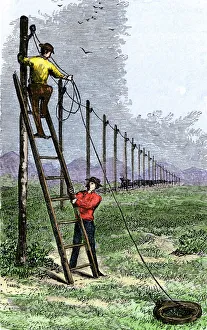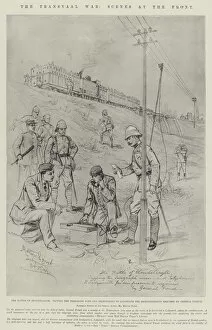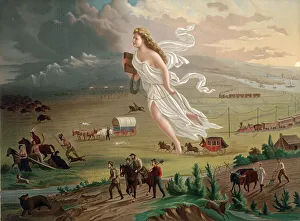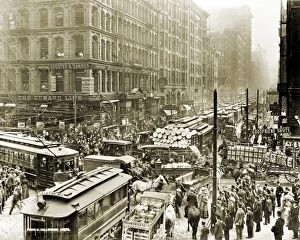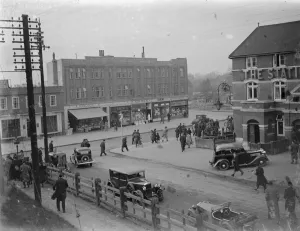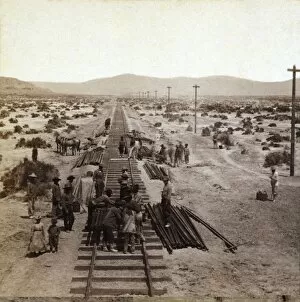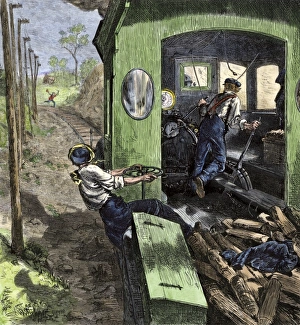Telegraph Wire Collection
"Connecting a Continent: The Telegraph Wire and the Transcontinental Railroad" In the late 19th century, as Manifest Destiny propelled American progress westward
All Professionally Made to Order for Quick Shipping
"Connecting a Continent: The Telegraph Wire and the Transcontinental Railroad" In the late 19th century, as Manifest Destiny propelled American progress westward, an innovative technology emerged that would forever change communication - the telegraph wire. Stretching across vast landscapes, these wires were supported by sturdy telegraph poles following the transcontinental railroad, symbolizing both human ingenuity and America's unstoppable march towards its destiny. Captured in iconic works of art like "American Progress" (1872) by John Gast, this technological marvel became a visual representation of progress itself. Depicted alongside pioneers and settlers forging their way through untamed frontiers, the telegraph wire stood tall as a testament to mankind's ability to conquer distance and connect far-flung communities. Prints such as "By Industry We Thrive" (1873) showcased bustling cities where these wires hummed with vital information. Meanwhile, lithographs like "The Transvaal War, Scenes at the Front" depicted how this revolutionary communication system played a role even in global conflicts. As urban centers grew more congested over time - exemplified by images like "CHICAGO: TRAFFIC, 1909" - it was clear that society had become reliant on this network for rapid transmission of news and commerce. From Boston Symphony Hall to Nikko Toshogu in Japan or Bridge Street in Sydney captured in photographs from around 1900, no corner of civilization seemed untouched by this web of connectivity. Yet amidst all its triumphs lay reminders of history frozen in time. Monumental structures like O'Connell and Nelson's Pillar stood proud on Dublin streetscapes at the turn of the century; silent witnesses to Ireland's own journey towards modernity facilitated by technologies such as telegraphy. The telegraph wire bridged gaps not only between people but also between nations and continents. It united humanity under one virtual roof where ideas could be shared, news disseminated, and progress achieved.

